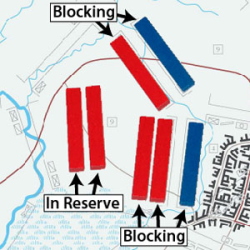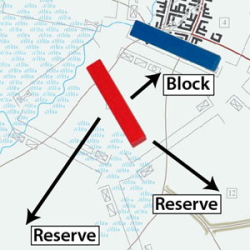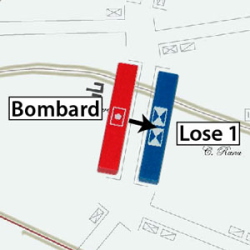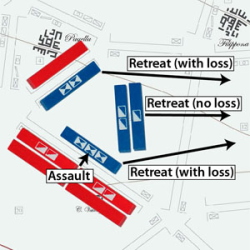|
(1) The map is divided into polygons called locales. The faces of the polygons are called approaches. Pieces can be either in the center of a locale (in reserve) or on one of the approaches (blocking). Pieces can only block an approach if the opposite locale is enemy-occupied. |
|
(2) During its turn, a piece may move to a different locale if that locale is adjacent and does not contain any enemy pieces. A piece may move to block an approach in the locale it occupies if the locale opposite that approach is enemy occupied.
|
|
|
(3) If an adjacent locale is occupied by enemy pieces but the approach is not blocked, an attempt may be made to take the locale by making a maneuver attack. The enemy pieces must choose whether to block (and risk a later assault) or retreat (and give up the locale and take a 1-strength loss). |
|
(4) Artillery blocking an approach may bombard enemy pieces in the opposite locale. One of the enemy pieces must take a step loss equal to the strength of the artillery. Bombarding artillery does not take losses. Defending pieces do not have to retreat after a bombardment.
|
|
|
(5) If enemy pieces are blocking an approach, pieces may attempt to drive them back by assault. In an assault, the terrain-adjusted stronger side wins. The winner takes a loss of one step, The loser loses one plus the strength advantage of the winner. |
|
(6) If pieces in a locale retreat from a maneuver attack or are defeated by an assault, all pieces in the locale must retreat from the locale, even those not involved. Each group of retreating pieces takes a one-step loss (exception: cavalry retreating from reserve does not take losses).
|
|





